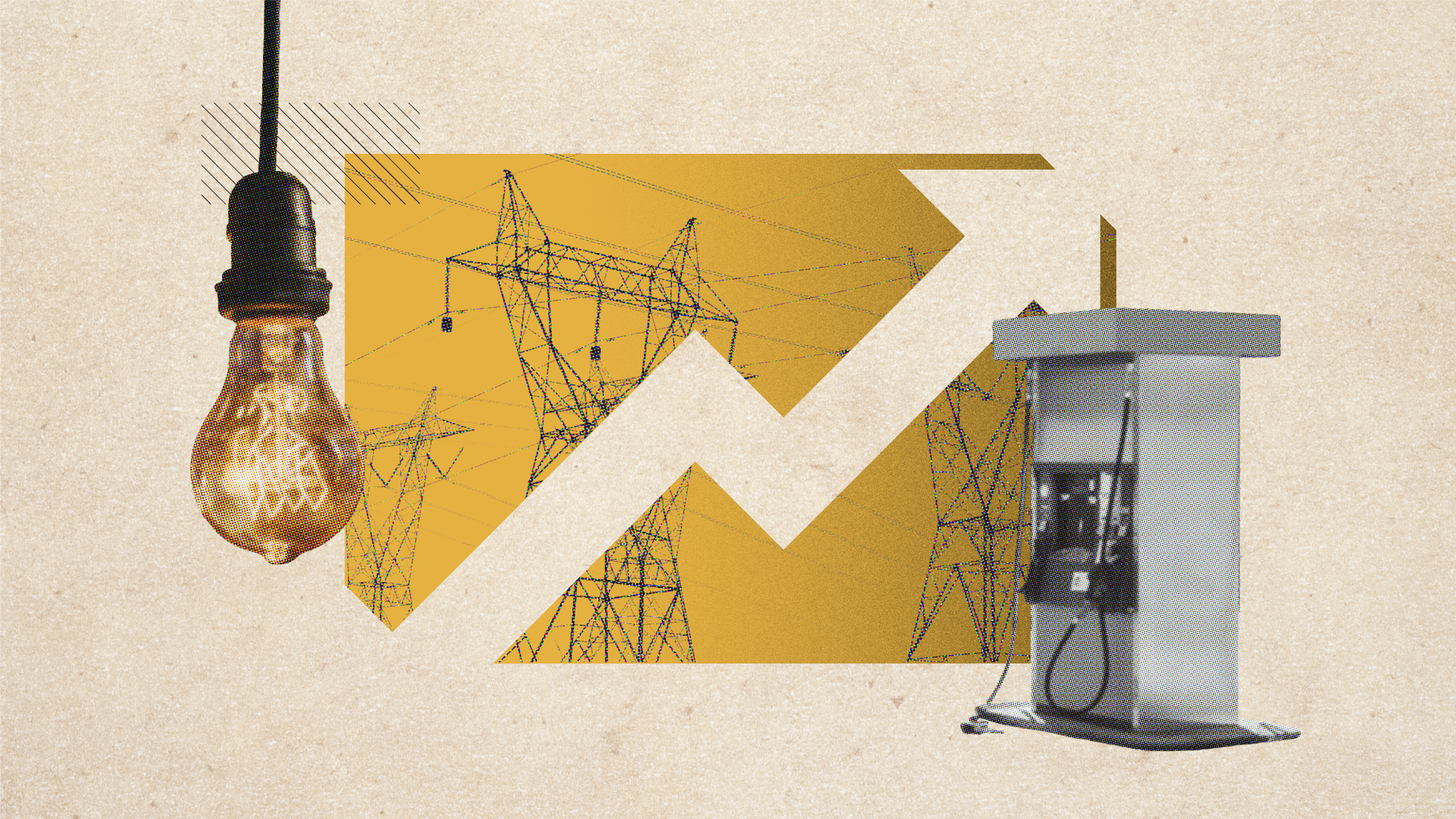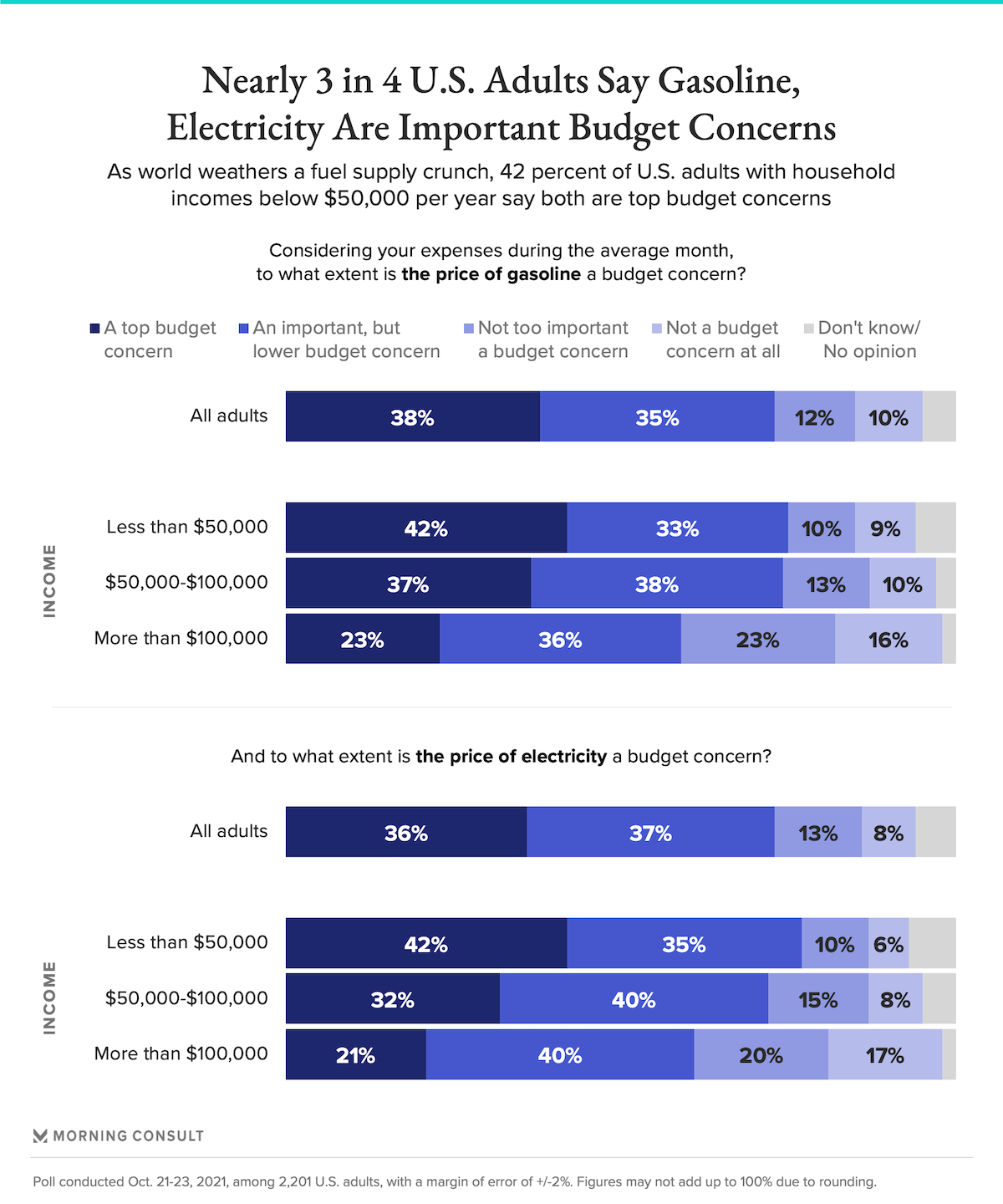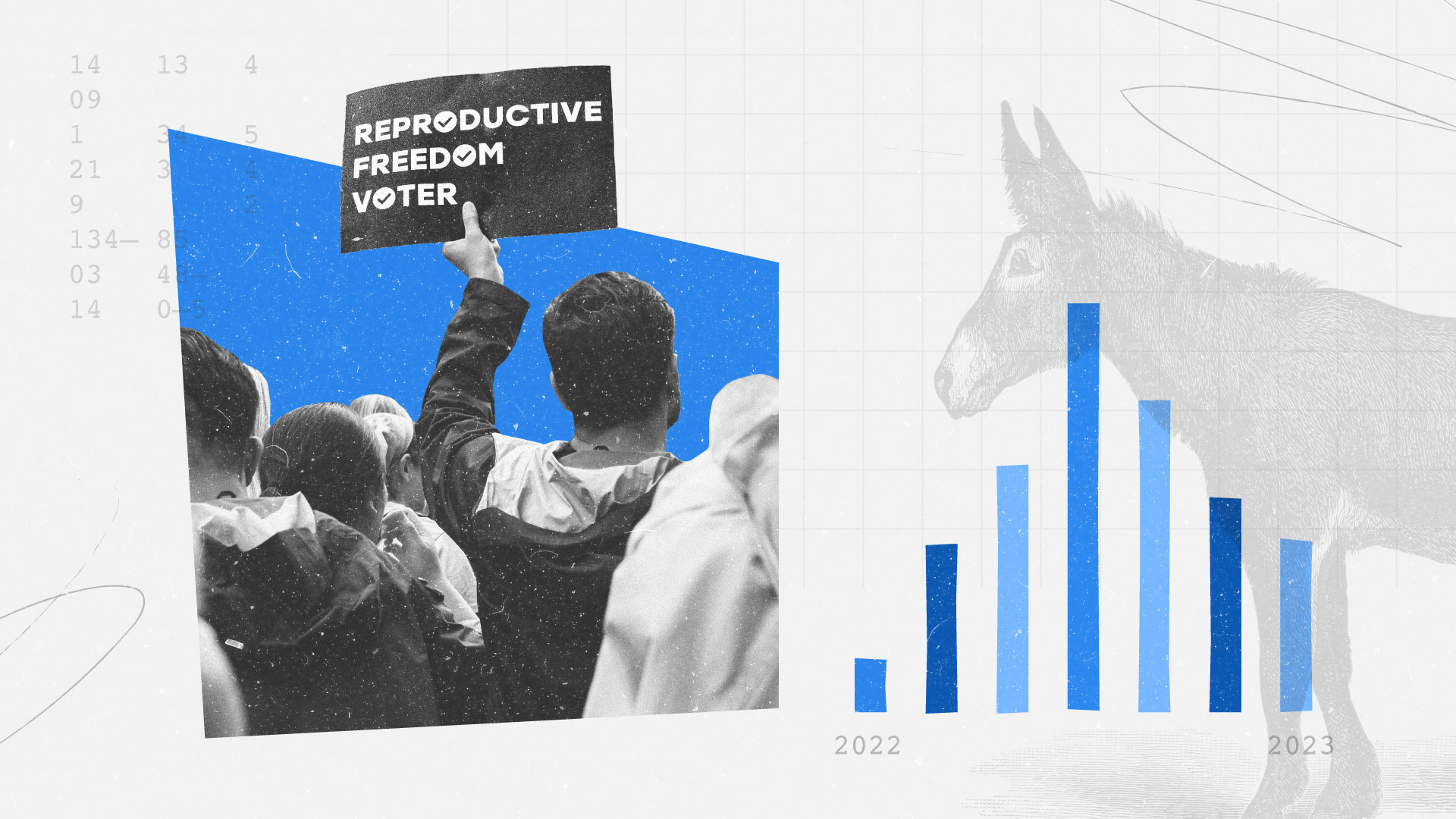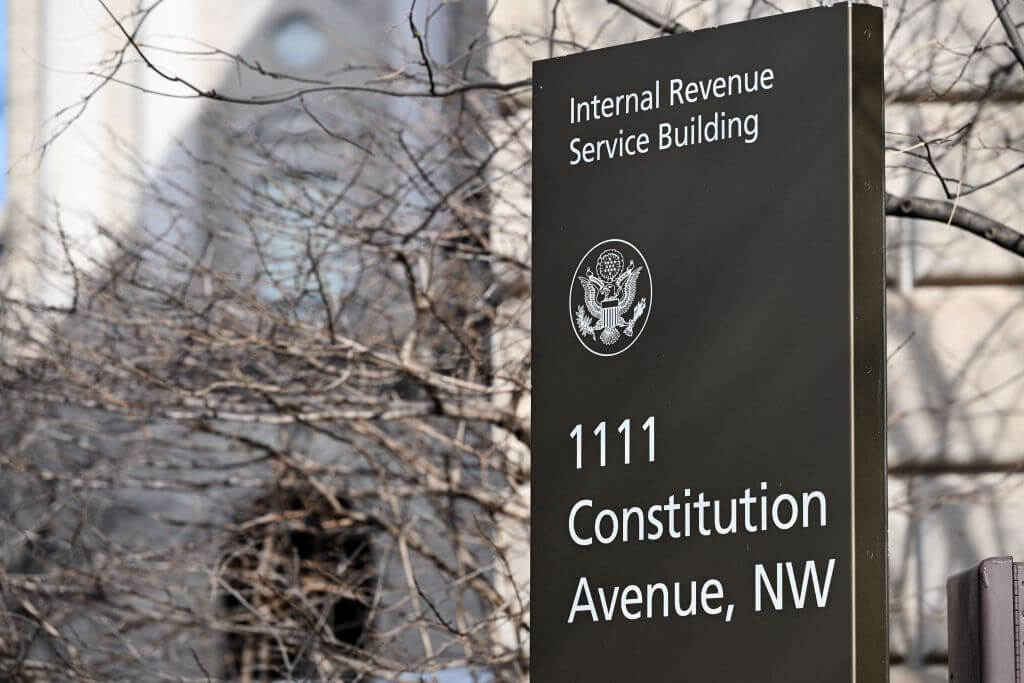Energy
Entering a Winter Marked by Potential Fuel Crisis, U.S. Consumers Get Antsy Over Prices

TAKING THE TEMPERATURE
This story is part of an ongoing series using data from Morning Consult’s “Taking the Temperature” project, launched in October 2021. It includes regularly updated climate concern and disaster concern trackers, broken down by party, race/ethnicity and generation, as well as a collection of stories based on other trended data on energy sources, fuel and electricity prices and more.
Natural gas and oil prices continue to increase, as the global community faces a potential fuel supply crunch in the winter months. In the United States, this is particularly visible in the form of high gasoline prices.
This increase has resulted in a growing share of U.S. households saying they are “very concerned” about both current and future gasoline and electricity prices, according to weekly Taking the Temperature data from Morning Consult.
Concern Over Current, Future Gasoline Prices
Concern Over Current, Future Electricity Prices
What the numbers say about price concerns
- Concern over current gasoline prices has begun to increase in tandem with the prices themselves since late September, with 46 percent now “very concerned” as of the most recent survey (Oct. 21-23); concern about future prices is even higher, at 56 percent.
- Meanwhile, the share of U.S. adults who say they are “very concerned” about the current price of electricity has also increased slightly recently, hitting 37 percent; concerns about the future price of electricity have begun to creep up in recent weeks as well, with 48 percent now saying they are “very concerned.”

What the numbers say about budget priorities
- For 38 percent of U.S. households, the price of gasoline is a “top budget concern” when considering their expenses for the average month; 36 percent said the same of the price of electricity.
- For low-income households (those bringing in less than $50,000 per year), the prices of both gasoline and electricity loom particularly large, with 42 percent saying each are top concerns. Gasoline prices elicit roughly similar levels of budgetary concern from low- and middle-income households ($50,000 to $100,000 per year) despite the latter’s more substantial disposable incomes.
The impact
While gasoline prices are largely out of the U.S. government’s control, high prices at the pump tend to cast a pall on the administration in office. The White House has commented on the subject in recent weeks, and though the president’s options are limited, they include placing limits on crude exports from domestic producers, expanding drilling and drawing from emergency stockpiles.
However, exercising these options is fraught for President Joe Biden, who is simultaneously trying to secure a deal on emissions restrictions at COP26 and encouraging limits on fossil fuel use. When the White House called on the Organization of the Petroleum Exporting Countries to pump more oil back in August, the move was met with accusations of hypocrisy from some corners.
What else you should know
- In the lead-up to COP26 in Glasgow next week, data shows that the U.S. public has an overwhelmingly positive opinion of zero-emissions sources like solar and wind, with natural gas close behind. Oil is comparably unpopular.
- While consumer sentiment and gas prices tend to have a reliably inverse relationship, the pandemic has largely upended it, according to previous Morning Consult reporting.
Data based on weekly surveys conducted among about 2,200 U.S. adults each, with a margin of error of 2 percentage points. The trackers will be updated on an ongoing basis.
Lisa Martine Jenkins previously worked at Morning Consult as a senior reporter covering energy and climate change.
Related content

As Yoon Visits White House, Public Opinion Headwinds Are Swirling at Home

The Salience of Abortion Rights, Which Helped Democrats Mightily in 2022, Has Started to Fade
